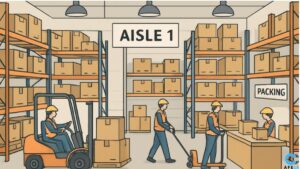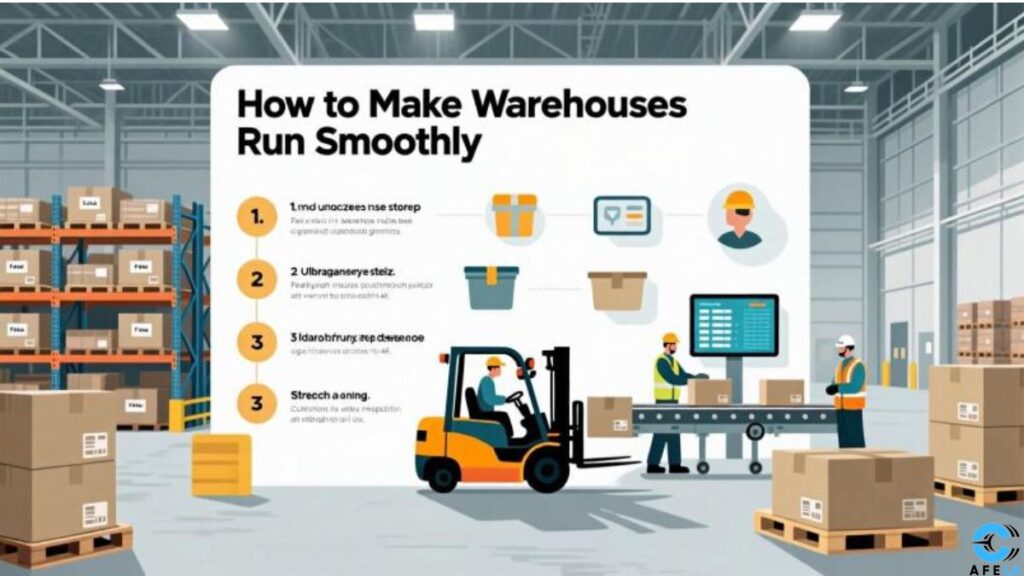Key Takeaways
- Optimizing warehouse layout and organization reduces travel time and increases efficiency.
- Implementing advanced inventory management systems ensures accurate stock levels and minimizes errors.
- Automation and robotics streamline repetitive tasks, enhancing productivity and safety.
- Regular employee training and engagement foster a skilled and motivated workforce.
- Adopting sustainable practices benefits both the environment and operational costs.
Table of Contents
- Introduction
- Optimize Warehouse Layout
- Implement Advanced Inventory Management Systems
- Embrace Automation and Robotics
- Prioritize Employee Training and Engagement
- Adopt Sustainable Practices
- Leverage Data Analytics for Decision-Making
- Enhance Safety Measures and Compliance
- Streamline Picking and Packing Processes
Introduction
Efficient warehouse operations form the backbone of any successful supply chain. In an increasingly demanding market, a streamlined warehouse is key to delivering products quickly and accurately, thus maintaining a competitive advantage. By employing proven organizational strategies, integrating technology, and continually adapting to industry best practices, warehouses can consistently meet customer expectations and fuel business growth. Choosing the right equipment, such as stem casters, is crucial for maximizing mobility and safety in every aisle and zone.
Operational excellence in warehousing hinges on both tactical and strategic improvements. From optimizing foot and equipment traffic to automating routine tasks, every change can have a meaningful impact on productivity and safety. Embracing modern solutions while laying a solid foundation of skilled personnel and eco-friendly practices ensures the warehouse remains agile amid evolving demands and regulations.
Optimize Warehouse Layout
A well-structured warehouse layout underpins operational efficiency by reducing labor costs and transit times while supporting safe workflows. Start by zoning inventory according to product type, demand availability, or shipping frequency. Place high-demand or fast-moving items near packing and shipping areas to curb unnecessary travel.
- Zone your spaces:Segregate bulk storage, picking, packing, and receiving for more streamlined flow.
- Utilize vertical space:To make the best use of the building’s cube, consider tall racking systems and mezzanines.
- Ensure clear pathways:Wide, well-marked aisles help equipment operators maneuver safely and efficiently through every stage of the warehouse process.
Periodic review and layout reconfiguration are essential as your SKU range and order profiles change. This agility ensures your warehouse keeps pace with seasonal variations and inventory expansions.

Implement Advanced Inventory Management Systems
Manual inventory management can create delays and errors regardless of your warehouse size. A digital inventory management system enables real-time stock tracking, helping businesses anticipate shortages and avoid costly overstocking.
- Accurate stock levels:Real-time insight into goods movement reduces errors and streamlines operations.
- Forecast demand:Leverage data for smarter replenishment and production planning, using historical trends and predictive analytics.
- Reduce shrinkage:Quickly spot discrepancies to minimize losses from theft or misplaced stock.
When integrated with procurement, shipping, and sales software, such tools increase overall visibility and responsiveness, which is essential for agile operations. For a deeper look at best practices in inventory management, see this guide from Harvard Business Review.
Embrace Automation and Robotics
Technological advancements are transforming the warehousing landscape. Automation optimizes repetitive or hazardous tasks—such as order picking, packing, and material movement—freeing staff for roles that require judgment and flexibility.
- Process speed:Automated systems, such as conveyor belts, sorters, and robotic arms, accelerate order throughput.
- Error reduction:Robotics and data-driven equipment minimize costly mistakes in fulfillment.
- Cost control:Automation requires upfront investment but delivers substantial long-term savings on labor and error correction.
Technologies like automated guided vehicles (AGVs) and smart conveyor systems can be tailored to suit a variety of warehouse sizes and industry needs.
Prioritize Employee Training and Engagement
People are your most valuable asset in the quest for operational efficiency. Invest in routine training to build skill and confidence—in everything from handling inventory management systems to operating specialized equipment like forklifts and scanners. A culture that welcomes employee suggestions for process improvement can more easily adapt and innovate.
- Safety practices:Ongoing safety training helps reduce accidents and absenteeism.
- Equipment use:Cross-training ensures the team can adjust to changing workloads.
- System proficiency:Staff who know how to leverage your inventory technology ensure data integrity and smooth workflows.
Well-trained, satisfied employees are more productive and less likely to leave, reducing turnover and retraining costs.
Adopt Sustainable Practices
Modern warehouses are responsible for operating with minimal environmental impact. Simple initiatives—like installing energy-efficient LED lighting and HVAC systems or launching recycling programs—can dramatically lower operating costs and carbon footprint.
- Lower energy use:Automated lighting and variable-speed HVAC systems reduce utility bills.
- Less waste:Reuse packaging and streamline processes for minimum landfill impact.
- Cost savings:Sustainable choices often come with long-term financial wins.
Demonstrating a commitment to sustainability builds trust with environmentally conscious partners and customers. For more on how sustainable practices benefit logistics, visit McKinsey & Company.
Leverage Data Analytics for Decision-Making
Analytics tools are no longer a luxury for large enterprises—warehouses of any size can benefit from performance tracking and predictive insights. Monitoring metrics such as order accuracy, pick rates, and on-time delivery helps identify bottlenecks and drive continuous improvement.
- Bottleneck identification:Pinpoint and proactively address choke points or inefficiencies.
- Performance monitoring:Make data-driven decisions about staffing and resource allocation.
- Informed investment:Analytics guide smarter investments in new technologies or process changes.
Integrated dashboards allow managers and frontline staff to track progress and respond rapidly to operational challenges.
Enhance Safety Measures and Compliance
Safety is paramount, as accidents slow operations and lead to compliance headaches. Regularly audit your facility for hazards, ensure personal protective equipment is available and in use, and stay updated with regulations from agencies such as OSHA.
- Routine audits:Early identification of risks prevents costly incidents.
- Proper PPE:Helmets, reflective gear, and gloves protect workers during daily tasks.
- Regulatory adherence:Avoid legal and financial repercussions by maintaining compliance documentation.
Instilling a safety-driven culture ensures employees remain vigilant and proactive in protecting themselves and each other.
Streamline Picking and Packing Processes
The most efficient warehouses constantly refine their picking and packing strategies. Utilizing barcode scanners drastically reduces manual data entry errors and speeds up verification. Considering cross-docking, where inbound goods are routed directly to outbound shipping, further reduces inventory holding times and expedites order fulfillment.
- Barcode scanning:Faster, more accurate data capture at every stage.
- Cross-docking:Minimize the time goods spend in storage, improving velocity.
- Packing station optimization:Well-equipped and organized stations keep teams efficient and motivated.
Frequent reviews of these workflows lead to incremental improvements, keeping customer satisfaction and business performance high.
By implementing these comprehensive strategies, warehouses can operate more smoothly, support their workforce, and remain resilient and adaptable in a competitive landscape.







